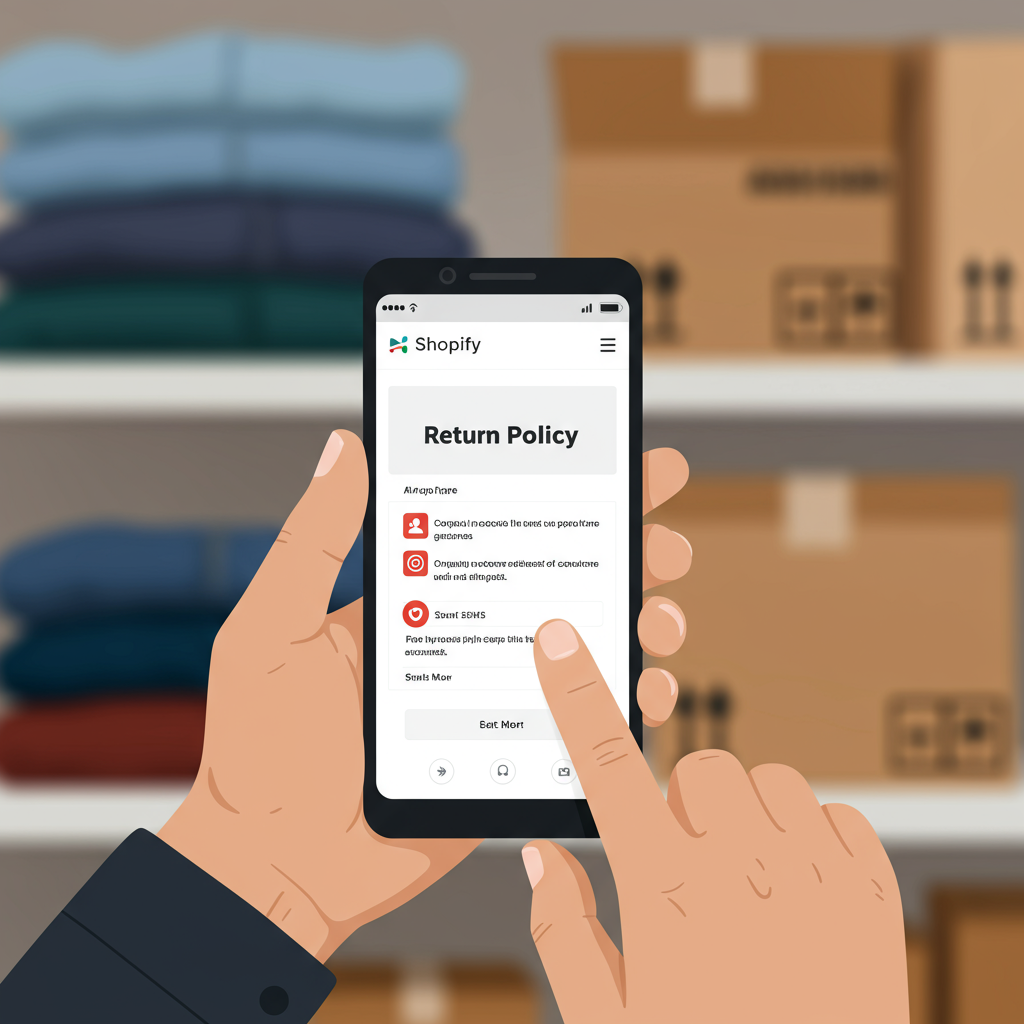Unlock the secrets to crafting effective return and refund policies that build customer trust and streamline your e-commerce operations.
As a Shopify merchant, one of the most critical aspects of running a successful online store is having clear, comprehensive, and customer-friendly return and refund policies.
These policies aren’t just legal necessities; they are powerful tools that build trust, reduce customer service inquiries, and ultimately, drive repeat business.
Today, I want to walk you through everything you need to know about setting up and managing your return and refund policies on Shopify.
We’ll cover the essential elements, best practices, and how Shopify’s platform can help you streamline this often-complex process.
First, let’s understand why these policies are so important. In the e-commerce world, customers can’t physically inspect products before buying.
This inherent uncertainty makes a clear return policy a significant factor in their purchasing decision. It provides a safety net, assuring them that if something isn’t right, they have recourse.
A well-defined policy also protects *your* business. It sets clear expectations, preventing misunderstandings and potential disputes that can be costly in terms of time and money.
It’s crucial to remember that Shopify itself does not dictate your return or refund policies. Instead, it provides the platform and tools for you to implement *your own* policies.
Your policies must comply with local consumer protection laws, which can vary significantly by region and country. Always consult legal counsel if you have specific concerns.
So, what are the key components you absolutely must include in your return and refund policy? Let’s break them down one by one.
**Return Window:** This specifies the timeframe within which a customer can initiate a return, typically from the date of delivery. Common windows are 14, 30, or 60 days. Be realistic about what works for your products.
**Condition of Returned Items:** Clearly state that items must be returned in their original condition, unworn, unused, with tags attached, and in original packaging. This prevents abuse of your policy.
**Eligible vs. Non-Eligible Items:** Define what can and cannot be returned. Examples of non-eligible items often include final sale items, personalized or custom products, digital goods, or intimate apparel for hygiene reasons.
**The Return Process:** Outline the step-by-step procedure for initiating a return. Should they contact customer service? Is there an online portal? Do they need a Return Merchandise Authorization (RMA) number?
Provide clear instructions on how to package the item and where to send it. The clearer you are, the smoother the process will be for both you and your customer.
**Refund Method:** Specify how the refund will be issued. Will it be to the original payment method, as store credit, or an exchange? Most customers prefer a refund to their original payment.
**Shipping Costs:** Who pays for return shipping? Is it the customer, or do you provide free return labels? Offering free returns can be a strong selling point, but it impacts your bottom line.
**Restocking Fees:** Will you charge a restocking fee for returned items? While some businesses do, it can be a deterrent for customers. If you implement one, clearly state the percentage or flat fee.
**Exchanges:** If you offer exchanges for different sizes, colors, or products, detail the process for this. Is it contingent on stock availability?
Once you have these elements defined, it’s time to craft your policy. Clarity and transparency are paramount. Use simple, easy-to-understand language, avoiding legal jargon where possible.
Make your policy easily accessible on your Shopify store. It should be linked prominently in your footer, on product pages, and ideally, during the checkout process.
Shopify offers a basic policy generator within your admin settings (Settings > Policies). This can be a good starting point, but I highly recommend customizing it to fit your specific business needs.
Don’t just copy-paste; tailor it. Think about your product type, your target audience, and your operational capabilities.
Now, let’s talk about implementing returns on Shopify. When a customer initiates a return, you’ll manage it primarily through your Shopify admin’s “Orders” section.
Here, you can select an order, issue a full or partial refund, and even restock items if they are returned to your inventory.
For return labels, Shopify Shipping can generate them if you use their services. Alternatively, many third-party apps integrate with Shopify to automate return label generation and tracking.
Consider using a dedicated returns app from the Shopify App Store. These apps can automate much of the process, from customer requests to label generation and even managing exchanges.
Beyond the technicalities, remember the customer service aspect. A smooth return experience can turn a potentially negative situation into a positive one, fostering loyalty.
Communicate clearly and promptly with customers throughout the return process. Acknowledge their request, confirm receipt of the returned item, and notify them when the refund has been processed.
Sometimes, it makes sense to make an exception to your policy for a valued customer or in unique circumstances. This flexibility can significantly enhance customer satisfaction.
Regularly review your return and refund policy. As your business grows, or as consumer expectations evolve, your policy might need adjustments.
Pay attention to customer feedback and common return reasons. This data can help you refine your policy and even improve your products or product descriptions.
A well-crafted and efficiently managed return and refund policy is not a burden; it’s an asset. It protects your business, builds customer confidence, and contributes to a positive brand image.
I encourage you to take the time to review your current policies or create new ones with these insights in mind. Your customers, and your business, will thank you for it.
What do you think about this article? I’d love to hear your thoughts on how you manage returns in your Shopify store.






